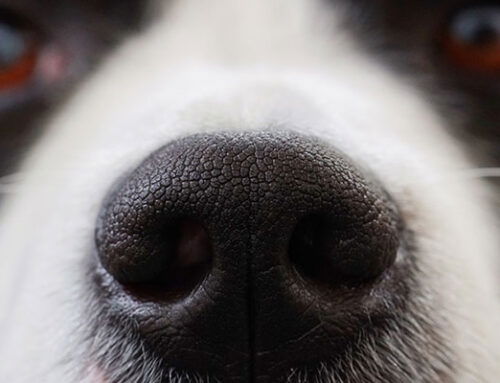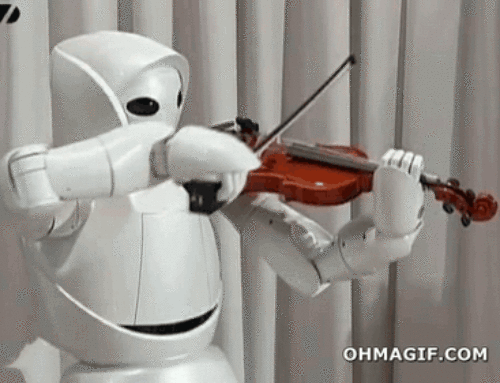Scientists, writers and artists of all genres devote their creative lives to draw whatever they can from themselves. Rarely does the final product achieve the imagined vision. For most, including myself, the challenge continues from one effort to another, always banking on the possibility that the next result will be better than the one before. I tell myself, “I need to change this, or add that. No, maybe I should go in another direction altogether. It’s not working right. I’m reaching for something that’s not there. What to do?” It never ceases, or at least never for more than a very short time.
When I was running a research laboratory at NIH, we had periodic sessions reevaluating our goals, brain storming on how to improve, reconsidering what needed more work and what less. Focus on improving, changing, evolving, while totally immersed in the subject is a major driving force for all creative work. Without it the work is compromised.
Despite the frustration, I also believe that scientists and writers are often satisfied to some extent with what they produce. I am self-critical, but somehow not ready to abandon the work, parts of me happy with the product and anxious to carry it a step further. I can’t imagine anyone continuing for any length of time doing what they truly consider junk.
There’s a motor within that doesn’t understand neutral.
A tricky truth that I have found for myself (I presume this differs for different individuals) is that new ideas, changes in direction, improvements – inspiration itself – emerge by doing the work. Einstein said it better: It’s 99% perspiration and 1% inspiration, or something of the sort. Most people have heard this; I’m not sure how many have listened to it. Waiting for the guiding light before fumbling in the dark is futile. Direction and all that it implies comes from making errors, being frustrated. In my experience, innovation arises from exhausting uncreative trials. It’s alchemy: transforming the mundane to the exceptional, rearranging the old to create the new. It doesn’t happen easily or often. No wonder it’s so maddening and discouraging!
Scientists are pampered to a large extent, despite the difficulty of being funded. They submit an article to a journal and a response is received within a few weeks at most. Sometimes the article is rejected outright because the editor decides that it is not well suited for that journal. Disappointing, but no big deal. Relatively little time has elapsed and there are other journals to try again. And again. More typically, peers review the submitted articles and their comments – favorable or critical – are sent to the author. What a luxury: free feedback! The author now has guidance for revision to make the article acceptable to the journal: so far, so good. Even rejections are explained and the comments are helpful for submission to another journal. And eventually, the article is published!! (Most articles find a publisher in a scientific journal).
If I’m the author I’m scared to read my published article in print because all I see are changes I would like to make, but it’s too late. However, that’s my problem. Here’s the important part in science: I just keep doing my experiments. I think only of the next article. The published work speaks for itself. Publishing in science is like confronting a vacuum cleaner that sucks up the article. Apart from presenting the work in lectures and referencing oneself in subsequent publications (it’s like a huge, one-person fan club, or being the top student in home schooling!), that’s it. I’ve never self-promoted a scientific article. Let the chips fall where they may; that’s the way of life for a scientist, at least it was for me.
But now to writing. After years of science, I have turned to writing fiction and essays. Science and art have always been intertwined in my mind, and I love literature. I was, of course, very happy when my first novel, Jellyfish Have Eyes, was published last year. I had doubted whether it would ever get published, and I’m grateful to IPBooks, my publisher, who took a chance on me. But, publication was not the end I’d envisioned, like it had been for my science. My novel had to be sold, and therein lies the rub. Who doesn’t want their book read, at least by a few people other than their immediate family and friends? I had no built-in professional audience. A writer needs a readership, and readers don’t grow on trees. And this is where my experience as a writer diverged from that of a research scientist. In all my years of science, I never thought beyond what journals might accept my articles. A published article slid into the past – became history – out of mind.
Writing and selling a novel, however, become inseparable, unlike science, which relies on history for its destiny. A novel, with rare exception, relies on public relations and salesmanship to be noticed. As a writer, then, I find myself in two conflicting worlds: an author struggling to get it “right” alone with my computer, pen and paper – doing the “guts” of the work – and a salesman, needing to disregard the embarrassment of shouting, however I can, “Hey, look what I’ve done! Come one, come all. Wonderful book for sale!”
Reasons for rejecting short stories by literary journals are never given, leaving me in the dark, thinking, “Why? My story is as good as the one I read in that journal last week.”
I queried 128 agents for my novel; 19 bothered to reply. One wanted to see 50 pages and then, in so many words, said, “No dice.” I presume that meant sales would be low. Small presses, and there are a lot, take months to reply, and less than 1% (a soft number that must vary with the press) of submitted books are published. Okay, it’s competitive, but there’s self-publishing, which is not an option in science, and there are other compensations for a writer.
More compensations than I immediately recognized.
Book fairs and social media are illustrative of my new literary world. I’m on FaceBook, trying to figure out where to click and when, how to add pictures, how to respond to “likes” (oh, my god, I clicked to unlike my friend by mistake!), how much to self-promote, how much to wear my feelings on my sleeve.
But, I’m speaking to the real world! Not just professional peers. People from all parts of life who I know and care about, and new ones keep popping up. Twitter: follow this, be followed by that. Confusing as hell, but I’m in the twenty-first century. I’m getting old, but thinking young. I’m back in grade school. Who wants to cling by their fingernails to the past? I’m recycling. I’m excited in my fatigue. I’m challenged to do it all over again. But what’s it mean?
I’m sitting at a table at the University Club book fair, stacks of my novel artistically arranged on the table, my pen ready for signing the dozens of books I plan to sell. Strangers come by. Some notice me, some glance at my book; most don’t do either. Or they pretend not to see me. Time elapses. An hour gone. Not a book sold. A man picks up my novel, pages through it. I stand up and give my spiel. I feel clumsy. He nods. “Interesting,” he says, and puts the book back on the table. I sit down again, embarrassed. I’m a total failure.
An author across the way is a genius salesman. He traps potential buyers like a cowboy with a lasso. “Hello, there,” he says to someone walking by, not noticing him in the same fashion that he didn’t notice me. “It’s many short stories you can read whenever you have a few moments. Keep it by your bedside,” barks the salesman/author. The man comes closer, picks up the book. “It’s only $12,” the author says. “It’s a bargain. I’ll sign it for you now,” he continues.
Yes, that’s right. The man bought the book!
I feel like shit.
Not everyone is so gifted. Many sit behind their tables like furniture themselves. They look like me.
I sold a few books. Why hide that fact? I wonder if they’ve read it, or ever will?
Then there was the Kensington book fair. Again, I sit behind my table, my books stacked artfully. Strangers again walk by. But, I’m getting better. I greet them more effectively, understand more what it’s all about: reaching people. I sell a few books. A man walks by with his young son on his shoulders. The father is looking straight ahead, but his son sees my pictured sign that says, Jellyfish Have Eyes. “Hey, look!” he exclaims. “Jellyfish!!” How I love that kid. But sadly his father, unimpressed, walked right by.
Another kid comes by with Mom. He’s about 10 or so, if that. He picks up the book looking serious. “Very interesting,” he says, like a professor. “Thanks,” I say, and wait for the scholar to respond. “These are box jellyfish, are they not?” Oh, my god, I think. Is this for real. “Yes,” I answer. “Just where are the eyes?” he asks. By now I’m treating him like an educated adult. “Well,” I said, “in this species there are four specialized regions called rhopalia situated around the jellyfish that contain the eyes.” I could say more, but really… “Oh, I see,” he says. His mother tells him they should move along. “Thanks,” the boy tells me, and then puts the book back on the table. “Is he learning all this at school?” I ask his mother. “No. He reads. He knows everything.” Oh, yeah, I think. He doesn’t know what my book’s about. He should have bought one, and maybe another for his sister he might have had.
After I’d sold a book or two, I realized how silly for me to sell these books. I’m unknown as a writer, and I need people to read my book, not pay me a few dollars. Why don’t I just give books to people stopping by and hesitating. That made sense to me. I gave away two books. I’m starting to feel more comfortable, less self-conscious. A new world is opening before my eyes. I’m testing where to go, how to get there, how to take some chances and how to live in the two conflicting worlds: writing and selling, doing and managing, creating and surviving.
No activity is just one thing. One of my favorite sayings that was posted in the second grade classroom of my son years ago at Sidwell Friends School. It read more or less as follows:
“Everything is something. Everything is connected to everything else. There’s no such thing as a free lunch.”
Oh, yes!
And now, back to work. I need to write.






Dear Dr Jaram,
I am siting at my home in my armchair; and reading your book. I can’t put it down. As a young scientist; the words mean a lot to me. I read a paragraph and go into a day dream of my own imaginary world. I am only half way (Rocardo is about to head out to Poerto Rico) and I am gripped. And not just by the story; but also by the challenge we face for the world to understand that all ideas come from imaginations (which can sound absurd the first time).
Thank you for writing this book. Hope to see many more.
Cheers
Manu
PS: I also make Origami paper microscopes (Foldscope) and share them with the world. If you would ever want one to look at some jellyfish eye in the field; I would happily send them to you.
You can reach me at manup@stanford.edu
http://www.foldscope.com
http://microcosmos.foldscope.com
– Manu Prakash